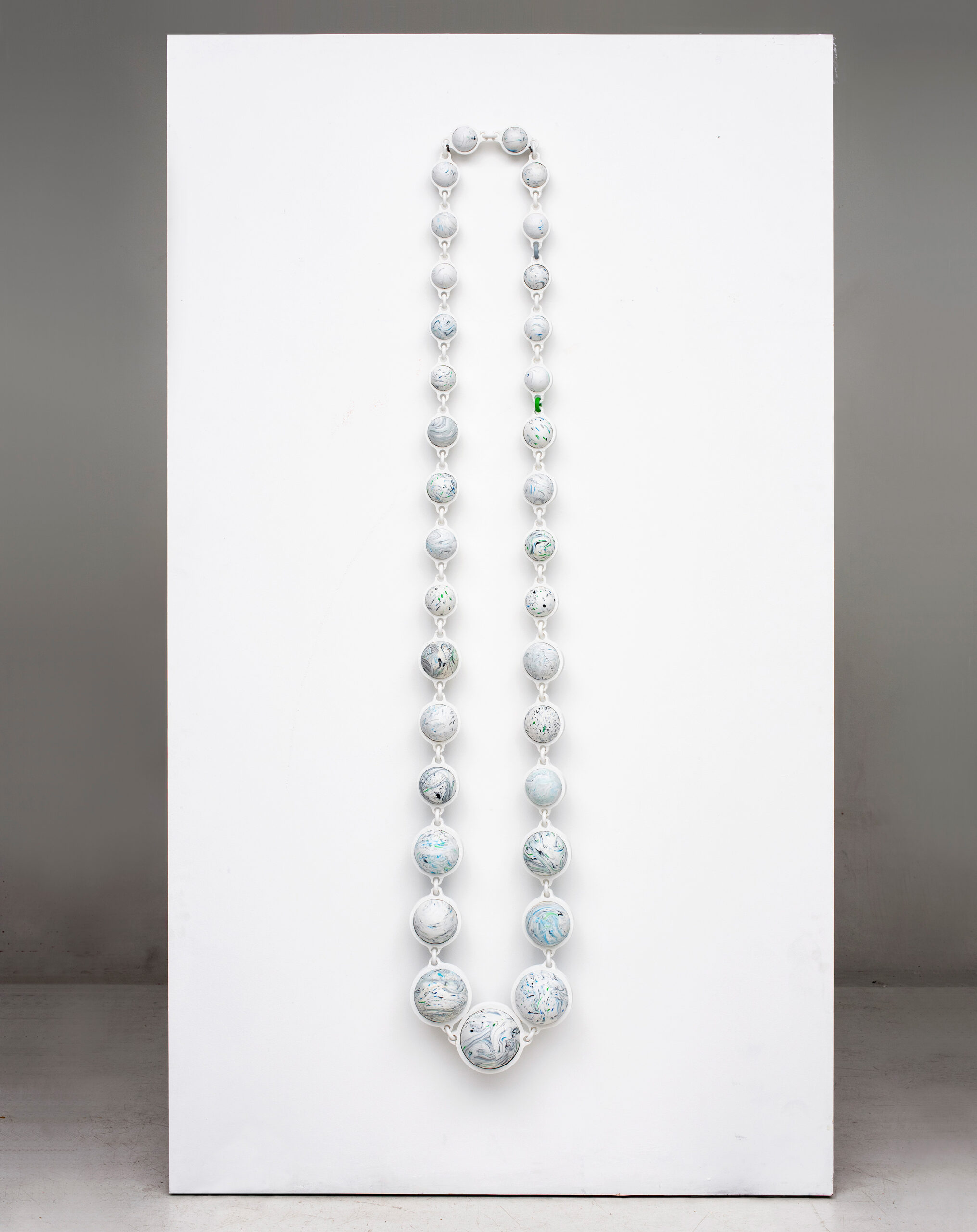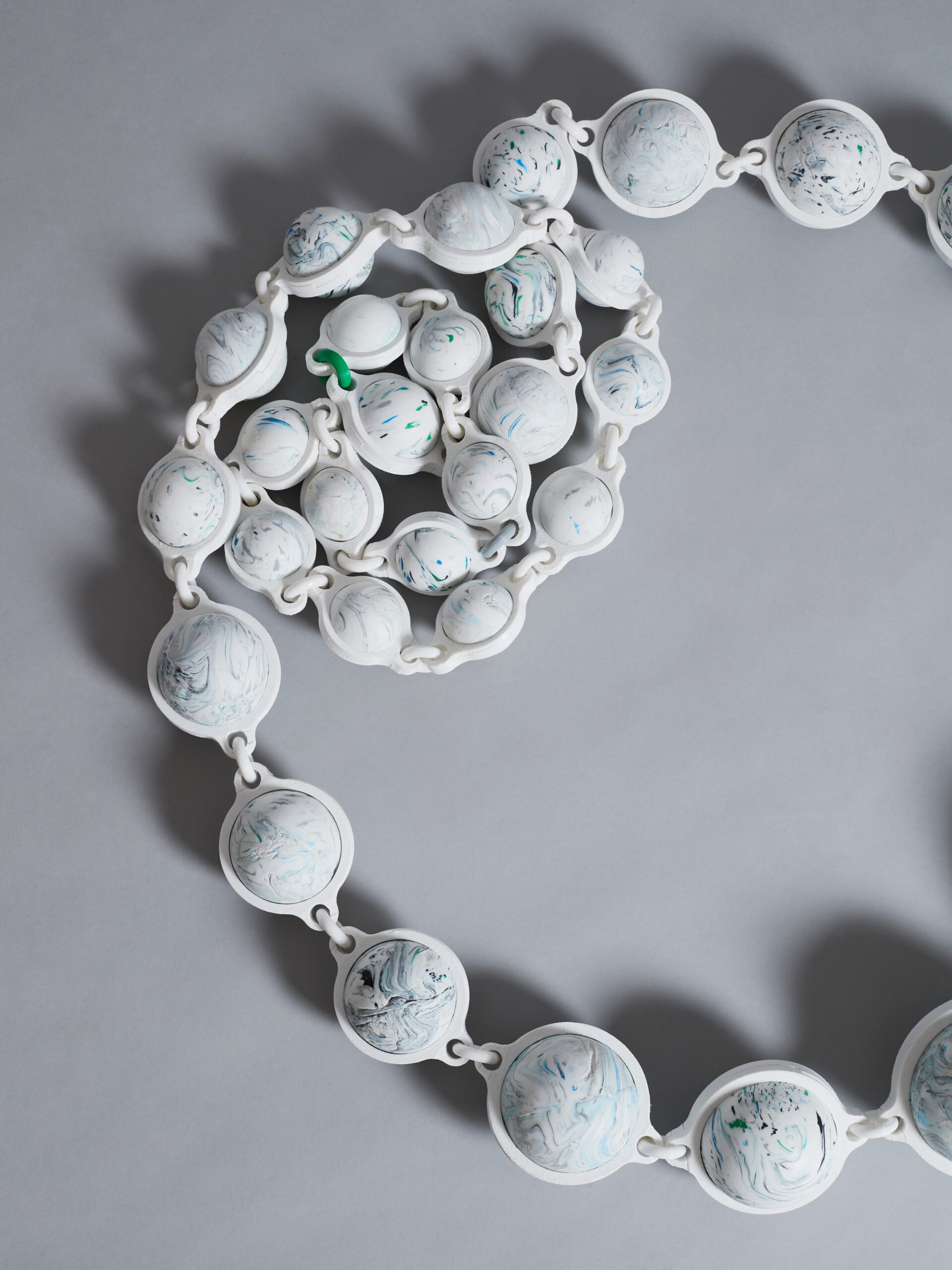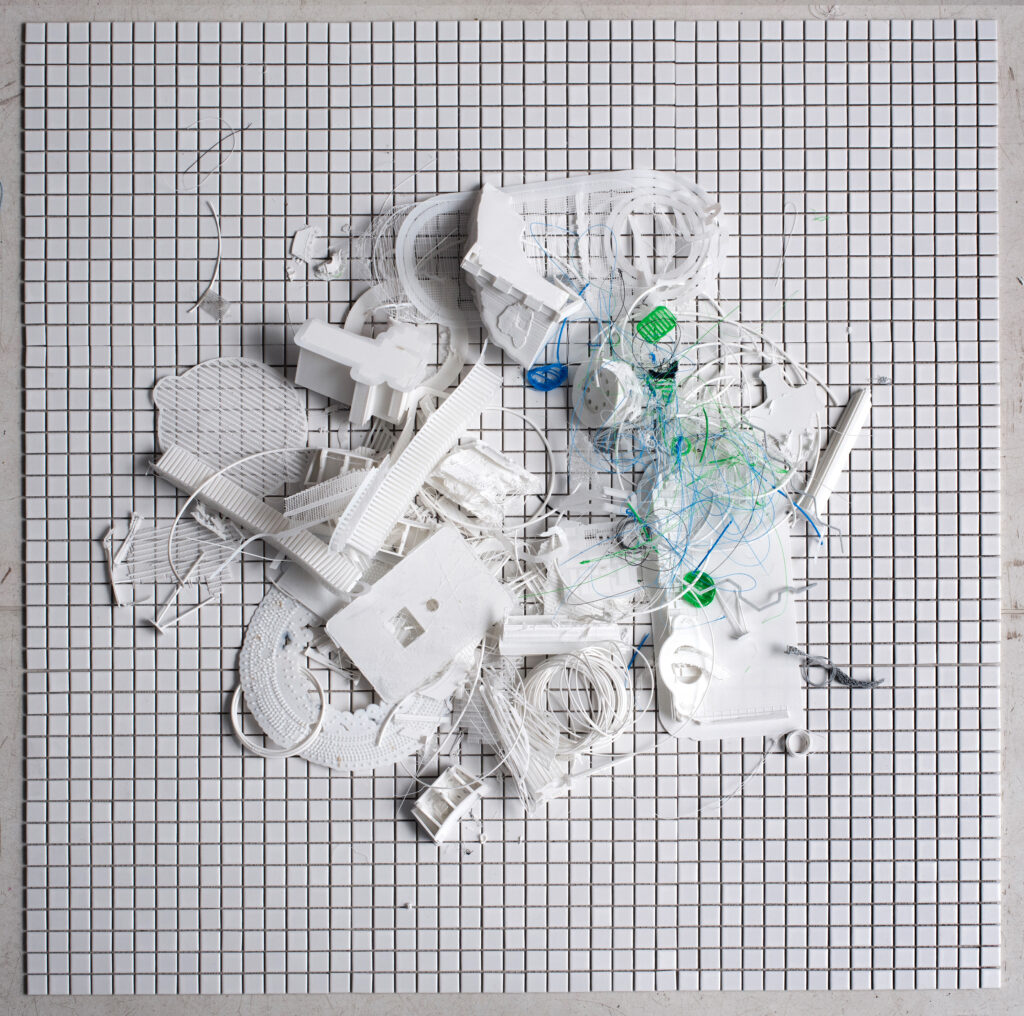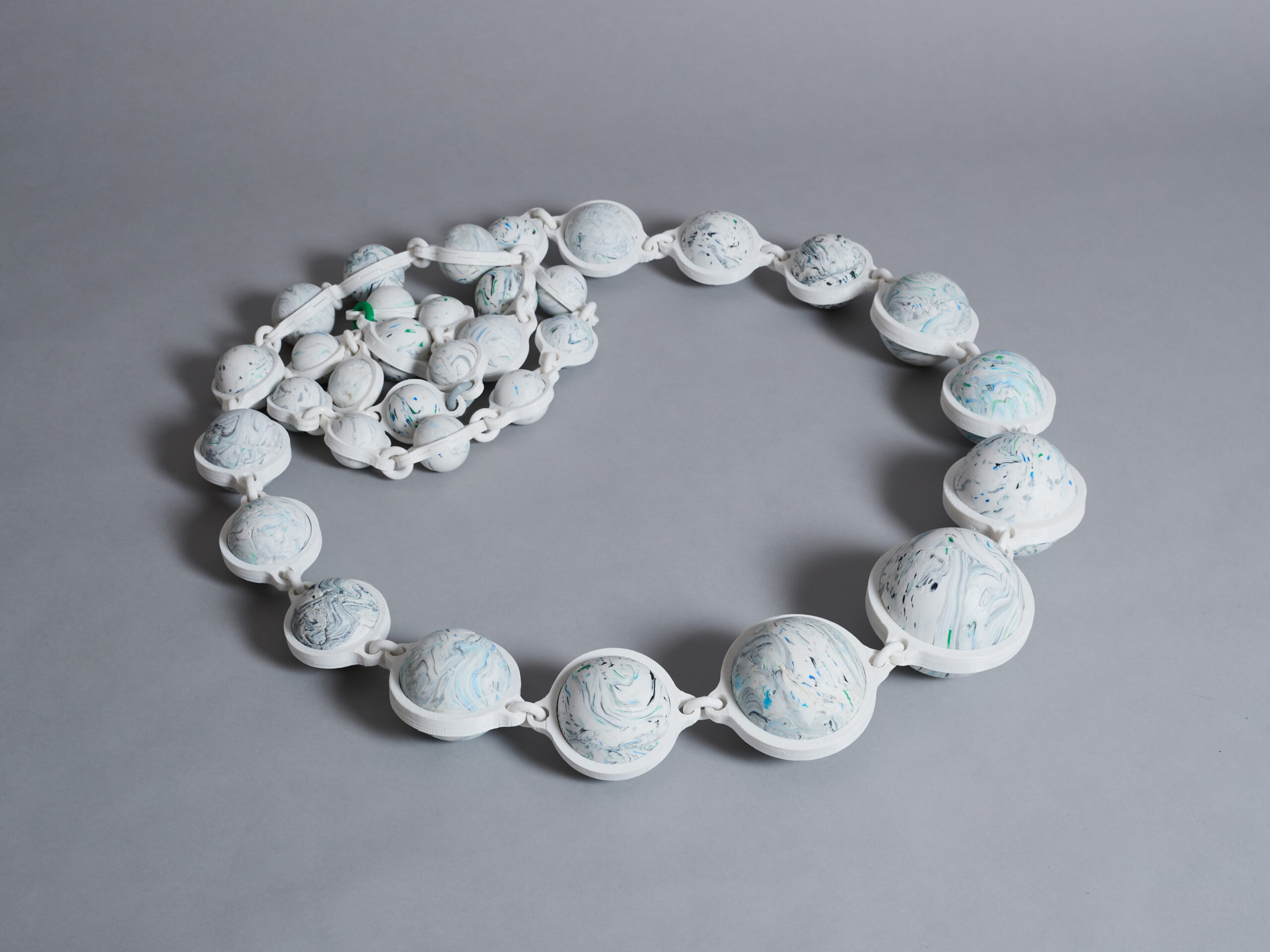Polylactic Acid Chain
Work in collaboration with Kyoko Hashimoto and Matt Harkness.
Acquired by the National Gallery of Victoria in 2023. Shown at the National Gallery of Victoria’s Sampling the Future exhibition from November 5th 2021 to 6th February 2022. Curator Ewan McEoin’s essay is here.

PLA (polylactic acid) is the most popular form of polymer plastic used in 3D printers. Having largely displaced traditional modelling and prototyping techniques, 3D printers eat and excrete tonnes of PLA daily in thousands of ‘makerspaces’ around the world. It is both recyclable and biodegradable in theory, but rarely done so in practice. These necklaces present recycled PLA sourced from makerspaces across Sydney in the form of uniquely patterned beads captured in 3D printed collars. The sphere is presented as a fundamental shape of the universe, formed by the play of gravity across time, coalescing all matter into galaxial objects.

My doctoral research student Matt Harkness is studying this specific problem in relation to makerspaces, as part of a broader inquiry into makerspace waste, access, diversity and creativity. He is concerned that makerspaces, dominated by proactionary technologist culture, perpetuate harmful systems of top-down, industrial waste-making practices that don’t address ecological needs for economic degrowth and regeneration. Makerspaces, for all their claims of innovation and advancement of technological culture, are an extension of a polluting industrial culture, using and perpetuating linear-design product forms and practices. PLA is a typical example – greenwashed by claims of ecological friendliness. These claims and our rebuttals are:
- Its often made from plant-based sources. However, it includes unknown quantities of petrochemical plasticizers, additives and colorants. Furthermore, the plant sources that are used are industrial monoculture crops such as corn or sugarbeets that disrupt the natural nitrogen cycle from the overuse of petrochemical fertiliser and may be complicit in deforestation. Using arable land (and water) to produce bioplastics instead of food is problematic, and discovering the origins of any particular batch or brand of PLA is practically impossible for users due to supply chain mystification. We know because we’ve tried.
- PLA is recyclable. But municipal councils don’t have the facilities to recycle it nor separate it from other plastics. 3D printed makerspace waste is not marked with recycling codes; though this may be a moot point because those codes themselves are an ineffective result of a plastic industry green washing conspiracy. Ultimately, 3D printer PLA waste goes into landfill.
- 3D printing, as an additive manufacturing method, reduces waste byproduct, tailings and offcuts that result from older subtractive manufacturing processes. But 3D printing isn’t byproduct free; a discarded supporting scaffold is needed to print most objects. More consequentially, the reality of 3D printing is that its expediency results in excessive rapid prototyping of trivial iterations. In other words, designers don’t work hard enough to resolve design constraints in CAD, like tolerances for example, because it’s easier to resolve in CAM: just print a new modified prototype and try it out. I’m guilty of this myself.
This necklace in made from the one material, PLA, in two conditions: virgin 3D printed PLA for the collars and recycled PLA for the beads. The collars are modular and use flexure joints to snap together without fixtures, so can be easily disassembled for repair and recycling. The collars create a chain referencing the polymer chains within the material. The inference here is to consider how important the polymer length is to successful recycling, and how they get shortened in each cycle from shredding. This shredding and mixing of colors creates the detailed surface patterning on the beads. The beads are durable, and should last a very long time, a consequence of their formal shape: the resolute sphere.
In the final few lines of the concept statement, in the first para of this page, we allude to the spherical planet-shaping forces of gravity as an end point for matter in the universe. This abstract idea is perhaps not entirely true (are black holes spherical?), but illustrates, to one extreme, the shift in scale initiated by scaling up the necklace typology away from the body. (The chain may still be sensible as a form in relation to the body, worn around the neck, though it’s very large for that. And in regard to design for sustainability, all material matters to the body, especially materials that can pollute, or biologically or ecologically harm.) At two extremes therefore, beyond the body, there exists the sphere as galactic object, at the scale of the universe, and at the other, the links as the chains of polymers that make up plastic, at the molecular level.
Can we think in between these scales to better understand the roles of materials in nature? Can we imagine the end state of a material in a universe-scale ecology, is that even perceivable? And what possibility exists to design for the shorter, but still long, timescales of planet-sized ecology and the circularity of materials on earth?





